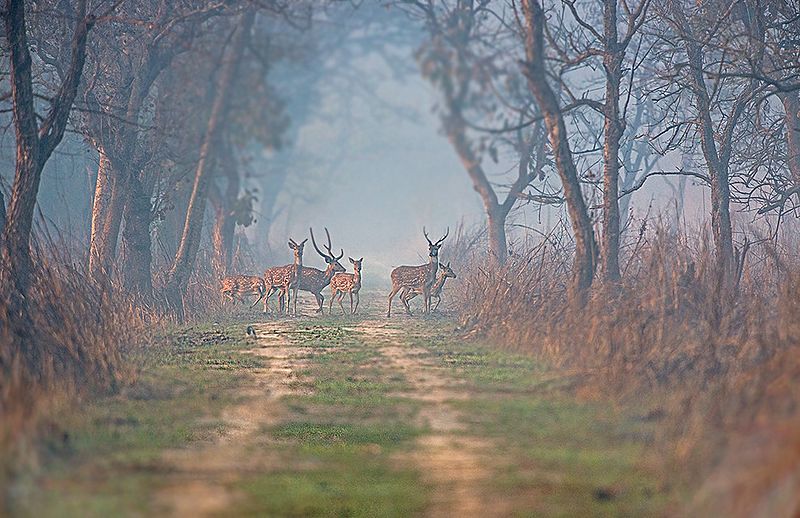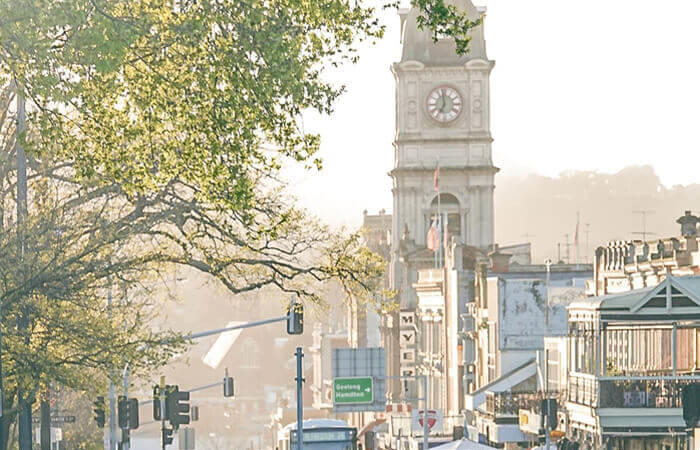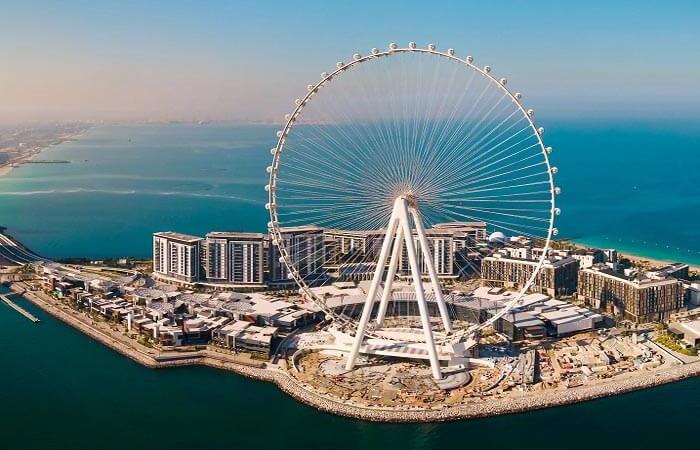Dudhwa National Park

Dudhwa Tiger Reserve lies on the India-Nepal border in the foothills of the Himalaya and the plains of the ‘terai’. The park is spread over an area of around 811 sq. km of marshes, grasslands, and dense forests. The main attractions of the park are it’s Swamp Deer (population over 1,600) and tiger (population 98 in 1995).
It is a home for over 38 species of mammals, 16 species of reptiles, and numerous species of birds. It has two core areas: Dudhwa National Park and Kishanpur wildlife sanctuary. They are 15 km. apart from agricultural land between them. The park is famous for the untiring efforts of ‘Billy’ Arjan Singh, one of India’s leading conservationists, who was instrumental in the creation of Dudhwa as a sanctuary of the Swamp Deer. Later he successfully hand-reared and re-introduced zoo-born Tigers and Leopards into the wilds of Dudhwa.
The forests here are reminiscent of the forests of Bardia on the Nepal side, with huge Sal trees, tall termite mounds, patches of riverine forests, and large open grasslands. Its lakes offer excellent opportunities for observing Swamp Deer and birds from ‘machans’. In the mid-1980s, Indian Rhinoceros was reintroduced into Dudhwa from Assam and Nepal. The park has a rich birdlife, with over 350 species, including the Swamp Partridge, Slaty-backed Woodpecker, and Bengal Florican.
Excursion (Dudhwa Tiger Reserve)
En route to Dudhwa, the unique Frog Temple at Oyal can also be visited. The only one of its kind in India, it was built by the former Maharajas of the Oyal state in the district of Lakhimpur-Kheri. Dedicated to Lord Shiva, the base of the stone temple is built in the shape of a large frog. The temple is at a distance of 10 km from Hargaon on the route to Lakhimpur-Kheri and Dudhwa.
Built in the Indo-Saracenic style by the rulers of the Singhai state, Surat Bhawan Palace is one of the famous palaces of the Terai area. Not far from the Dudhwa Tiger Reserve on the Lakhimpur-Nighasan-Dudhwa route, the palace is set in a large green, nine-acre retreat. Expenses of lush lawns, fountains, a swimming pool, and interesting architectural details make a visit to the palace worthwhile.
Flora in Dudhwa National Park
Sal Shorea robusta, asna Terminalia tomentosa, shisham Dalbergia sissoo, bahera Terminalia balerica, khair Acacia catechu, jamun Syzygium cumini.
Main Fauna in Dudhwa National Park
Mammals: Tiger, leopard, swamp deer, rhinoceros, chital, hog deer, barking deer, sambar, wild boar, and ratel.
Birds: Around 400 species including Bengal Florican, Black-necked Stork identified.
Fish: 90 species of fishes identified.
Endangered Species: Tiger, swamp deer, leopard, ratel, hispid hare, Bengal Florican, Black-necked Stork.
Season (Dudhwa National Park)
Mid November-mid June, the best period being February-April.
General Details (Dudhwa Tiger Reserve)
Headquarters: Lakhimpur (Kheri), UP, India
Altitude: 150-183 meters Nearest Town: Palia (10 km.) Nearest petrol pump! Hospital / market /bank / Post & Telegraph Office are at Palia
Climate (Dudhwa National Park): Like the rest of north India, Dudhwa also has an extreme type of climate. Summers are hot with the temperature rising up to 40 C. During winters, the temperature hovers between 20 C and 30 C. The average annual rainfall is 1,600 mm.
Clothing (Dudhwa National Park)
Summer: Cotton
Winter: Light woolens preferably ‘khaki’, olive green, gray, or other inconspicuous clothing which does not alarm or scare away the animals.
Travel Info (Dudhwa Tiger Reserve)
Drive from Delhi (8-9 hours) or take the train to Shahjehanpur and drive to Dudhwa (3 hours). Alternatively, fly to Lucknow and drive to Dudhwa (245 km, 6 hours).
Nearest Railway Station: Dudhwa (4 km.), Palia (10 km.), Mailani (37 km.)
Nearest Airport: Lucknow, Dhangarhi (Nepal, 35 km.)






